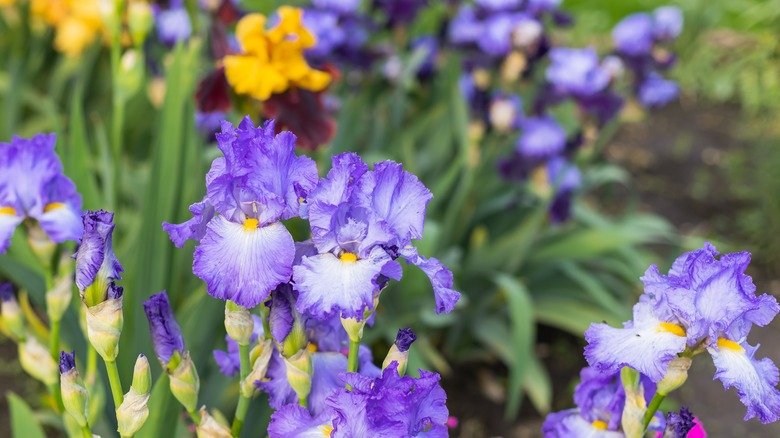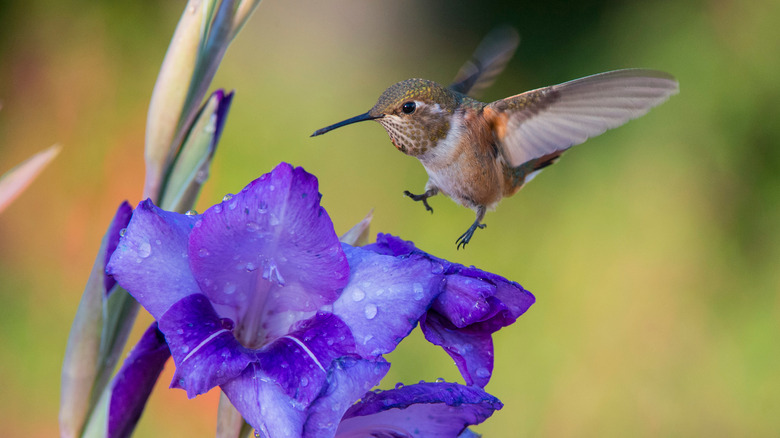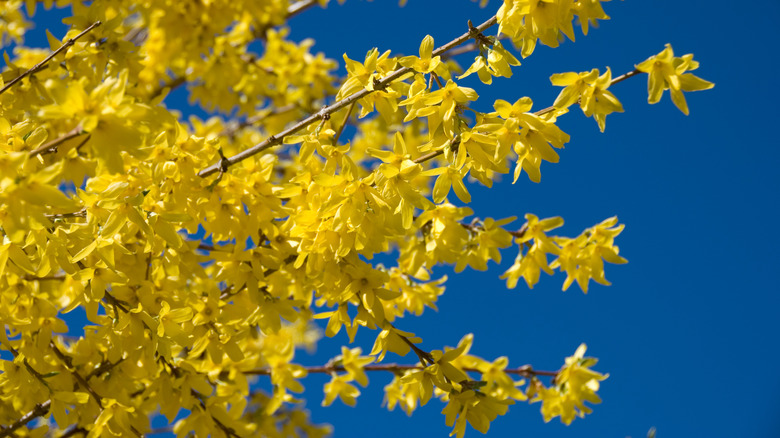The Benefits Of Planting Irises Next To Your Forsythia
No matter how you like to decorate your yard, nothing compares to the beautiful display that comes from a garden full of different flower varieties. Because of their stunning and highly saturated petals, forsythias and irises are often showstoppers in these arrangements. These two complement each other perfectly and have similar needs when it comes to sunlight and watering, making them an ideal duo. And, it is believed that irises and forsythias provide actual physical benefits to one another, making the pairing even more appealing.
There are over 250 different species of the delicate-looking yet durable iris flower. Most of them flower from late spring into early summer, while some can bloom again in the later months of summer. Irises are known for their purple and blue hues, but they come in all different colors including orange, pink, red, yellow, and even white. Forsythia shrubs are deciduous, shedding their leaves annually and blooming in the early months of spring, much like irises, with beautiful yellow flowers.
Physical benefits
There are great physical benefits to planting forsythia shrubs and irises in the same soil. They have a mutualistic relationship, meaning that both plants benefit from one another because they promote each other's growth. Both do well with full sunlight — at least six to eight hours a day — and it is important to note that irises should be planted in front of forsythias because these shrubs can grow up to ten feet tall and overwhelm the irises.
Like their preferences in sun exposure, irises and forsythias also share similar soil pH preferences. Irises thrive in slightly acidic to neutral soil, while forsythia shrubs prefer neutral to slightly alkaline, making neutral soil the perfect middle ground. Both flowering plants attract bees, butterflies, and birds, all of which benefit and promote the plants' growth by pollinating the flowers in bloom. Since the flowering period for both irises and forsythias is early spring, it makes it easy for these natural pollinators to work between the two blooming plants.
Visual benefits
While providing immense practical benefits, irises and forsythia shrubs also have remarkable visuals that complement one another. Irises can grow anywhere from two to three feet in height. Meanwhile, forsythia shrubs can grow up to 10 feet tall and 12 feet in diameter. With the irises in the foreground and forsythias framing them in the background, this massive size difference itself is enough to garner an intriguing landscape.
Along with the juxtaposition in height, shape, and size, their bright colors are also extremely noticeable and appealing, especially when the two are planted together. Irises grow in an abundance of saturated hues from purples and blues to reds and pinks, while forsythia — one of the best shrubs to plant for a colorful spring — grows vibrant yellow flowers in bloom. All of the iris varieties look stunning in front of a blooming forsythia, and you can even mix and match iris species to add even more color to your landscape, though the stark contrast in complementary colors of yellow forsythia flowers and purple irises is beyond compare and is a must-have in any garden.


